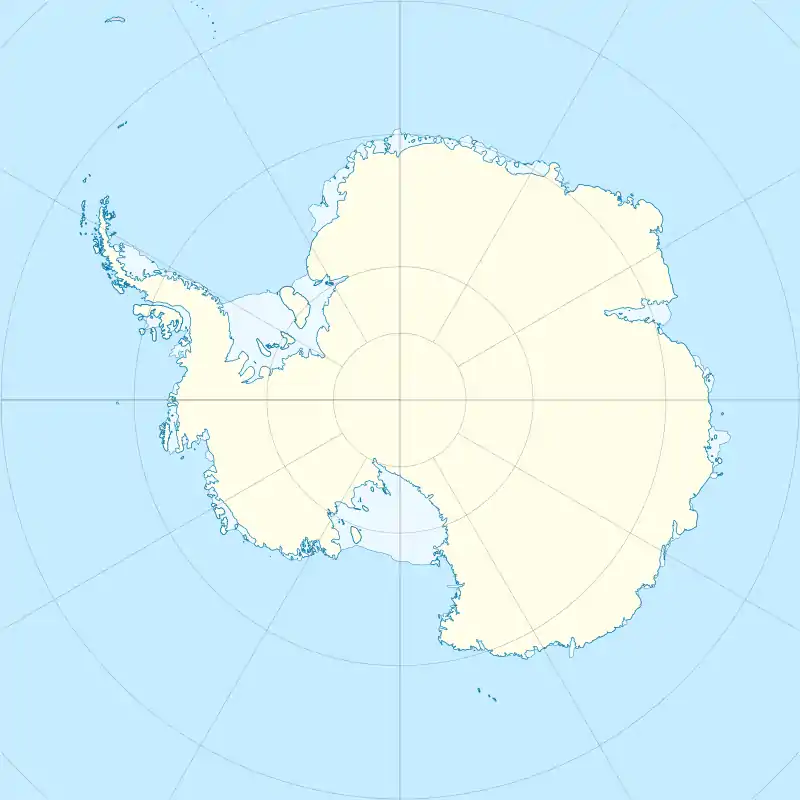 Gourdin Island Location in Antarctica | |
| Geography | |
|---|---|
| Location | Antarctica |
| Coordinates | 63°12′S 57°18′W / 63.200°S 57.300°W |
| Administration | |
| Administered under the Antarctic Treaty System | |
| Demographics | |
| Population | Uninhabited |
Gourdin Island is the largest island (124 ha) in a group of islands and rocks 2 km (1 nmi) north of Prime Head, the northern tip of the Antarctic Peninsula. It was discovered by a French expedition, 1837–40, under Captain Jules Dumont d'Urville, and named by him for Ensign Jean Gourdin of the expedition ship Astrolabe. The island was reidentified and charted by the Falkland Islands Dependencies Survey in 1945–47.[1][2]
Important Bird Area
The island has been identified as an Important Bird Area (IBA) by BirdLife International because it supports a large breeding colony of about 14,000 pairs of Adélie penguins, as well as over 550 pairs of gentoo penguins.[3]
See also
References
- ↑ "Gourdin Island". Geographic Names Information System. United States Geological Survey, United States Department of the Interior. Retrieved 2 May 2012.
- ↑ Alberts, Fred G., ed. (June 1995). Geographic Names of the Antarctic (PDF) (second ed.). United States Board on Geographic Names. p. 288. Retrieved 5 April 2012.
- ↑ "Gourdin Island". BirdLife data zone: Important Bird Areas. BirdLife International. 2013. Archived from the original on 10 July 2007. Retrieved 1 January 2013.
![]() This article incorporates public domain material from "Gourdin Island". Geographic Names Information System. United States Geological Survey.
This article incorporates public domain material from "Gourdin Island". Geographic Names Information System. United States Geological Survey.